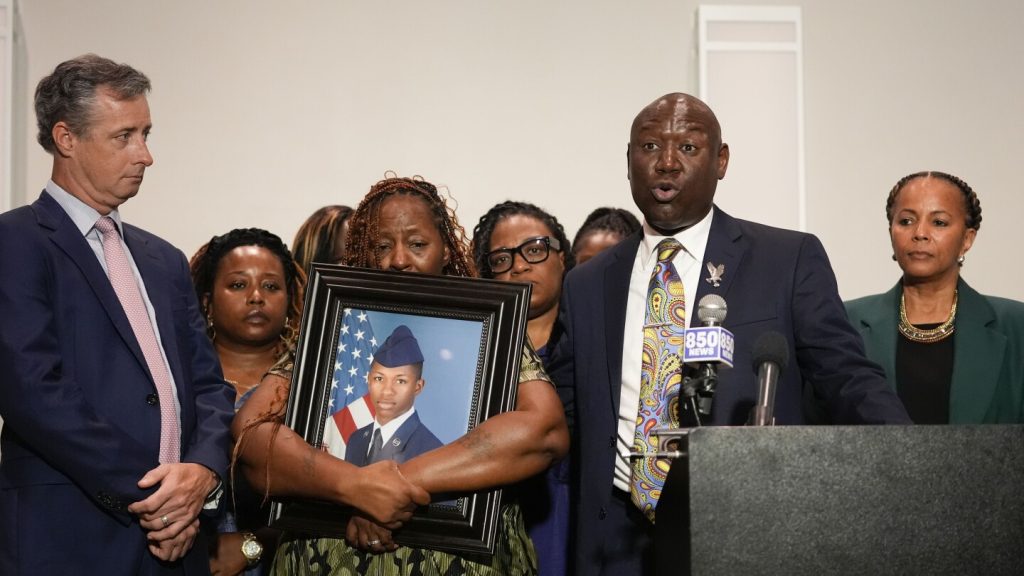The shooting of Roger Fortson by a sheriff’s deputy in Florida has sparked controversy, with his supporters claiming it was an unjustified killing of a Black American, while authorities argue it was an act of self-defense due to Fortson holding a gun when he answered the door. The incident raises questions about law enforcement’s use of deadly force, especially in a country where the prevalence of firearms makes such decisions more complex. Experts note that simply holding a gun does not automatically justify the use of deadly force, and that officers must assess the situation and the behavior of the individual before taking action.
The body camera video of the shooting shows the deputy knocking on Fortson’s door after responding to a complaint about an argument, and Fortson answering the door while holding a gun by his side. Within seconds, the deputy shoots Fortson six times, only then instructing him to drop his weapon. Sheriff Eric Aden maintains that the deputy acted in self-defense, while Fortson’s family’s attorney insists that the deputy went to the wrong apartment since Fortson was alone and on a Facetime call with his girlfriend. The Florida Department of Law Enforcement is investigating the incident, and experts emphasize the importance of behavioral indications of intent to cause harm when assessing the use of deadly force.
The increase in gun ownership in the United States has changed policing practices and presented officers with the challenge of making split-second decisions about what constitutes a deadly threat. The presence of firearms accelerates decision-making and heightens risks for both law enforcement and civilians. While some criticize the deputy for not issuing a verbal command to drop the weapon before shooting, experts note that feasibility plays a role in determining whether a warning is necessary before using deadly force. The debate over the shooting of Roger Fortson highlights the complexities of law enforcement encounters in a society where guns are pervasive.
Criticism of the Okaloosa County Sheriff’s Office’s use of force is not new, as previous incidents have raised concerns about the department’s tactics. An ongoing federal lawsuit filed by LaTanya Griffin alleges that deputies used excessive force when serving a search warrant at her home in 2019, while another incident involving a deputy firing at a handcuffed man inside a patrol vehicle also drew scrutiny. The shooting of Roger Fortson adds to the debate over law enforcement practices and the need for accountability and transparency in the use of deadly force.
The shooting of Roger Fortson comes at a time when law enforcement agencies are under increased scrutiny for their actions, especially in incidents involving deadly force. As the investigation into Fortson’s shooting continues, experts stress the importance of considering all factors, including the presence of firearms, behavioral cues, and the feasibility of issuing warnings before using deadly force. The complexities of policing in a society where guns are prevalent require officers to make rapid decisions while balancing risks and ensuring the safety of both themselves and the public.
The shooting of Roger Fortson by a sheriff’s deputy in Florida has reignited conversations about police use of force, especially in cases involving individuals who are armed. The debate over the justification of the shooting and the actions of law enforcement officers reflects broader concerns about accountability, transparency, and the need for systemic changes to address racial disparities in policing. As the investigation unfolds, the incident serves as a reminder of the challenges faced by law enforcement in a society where firearms are widespread and the complexities of assessing threats require careful consideration of all factors involved.


